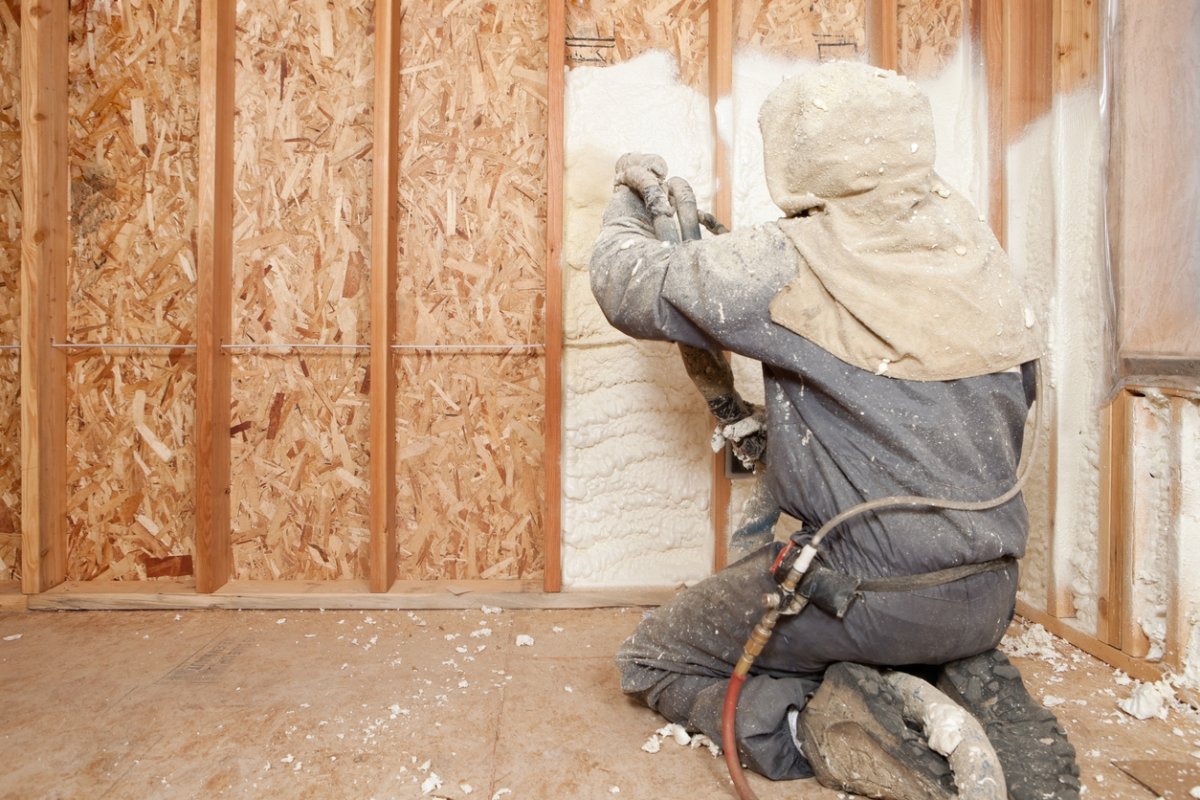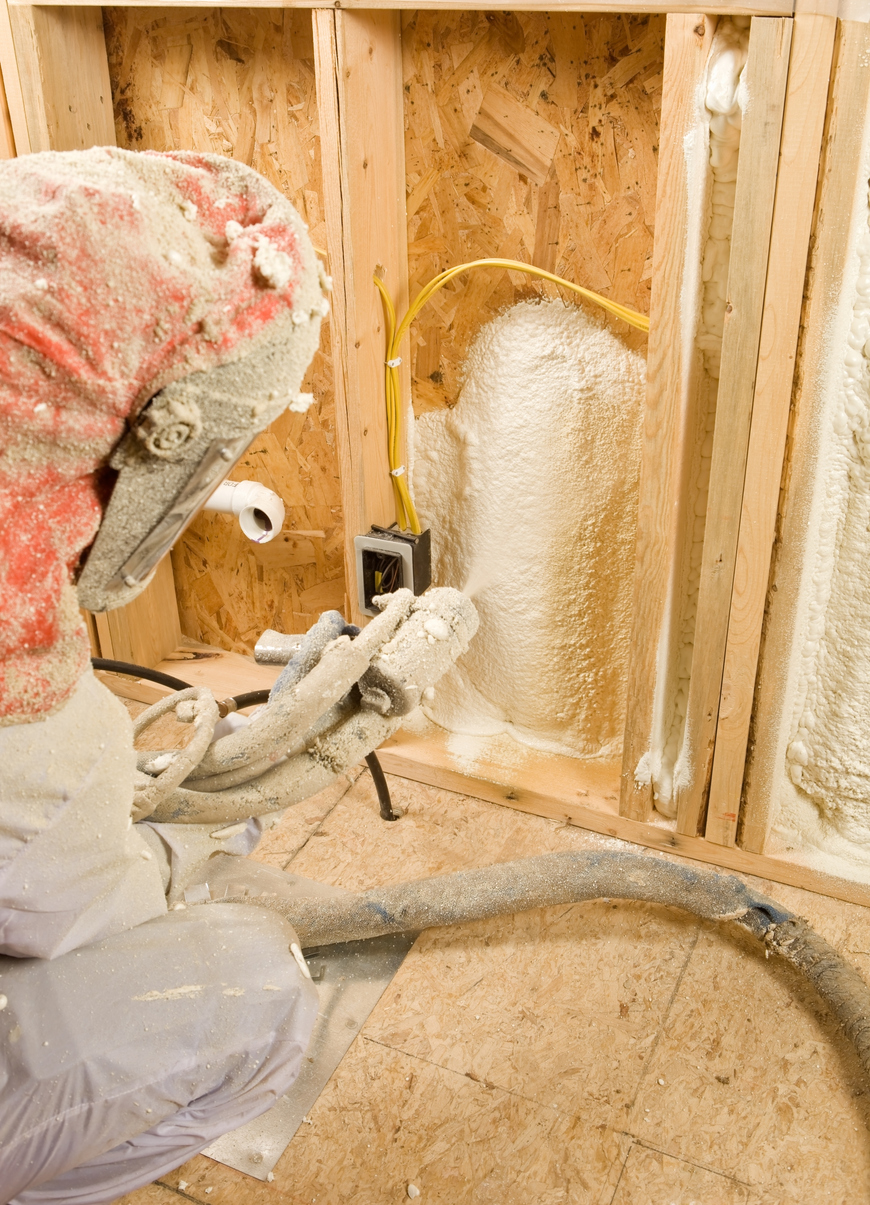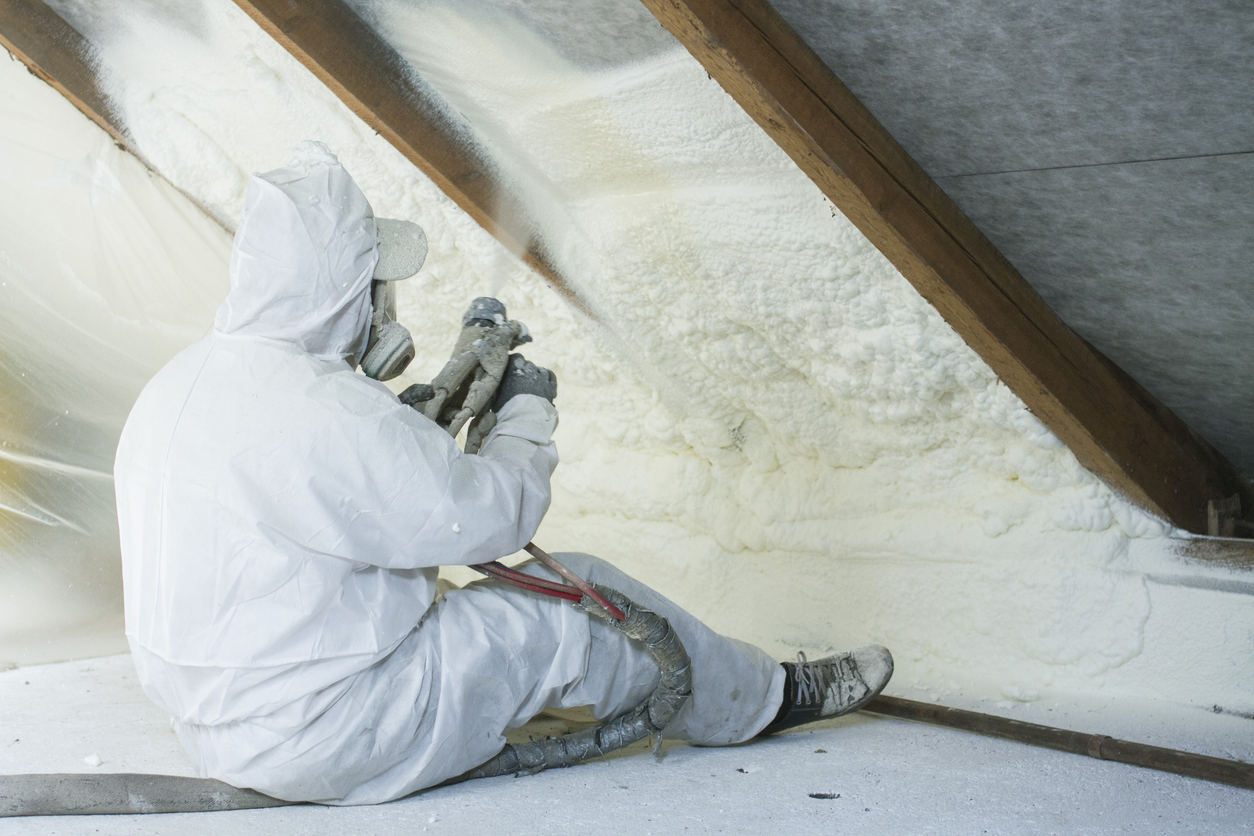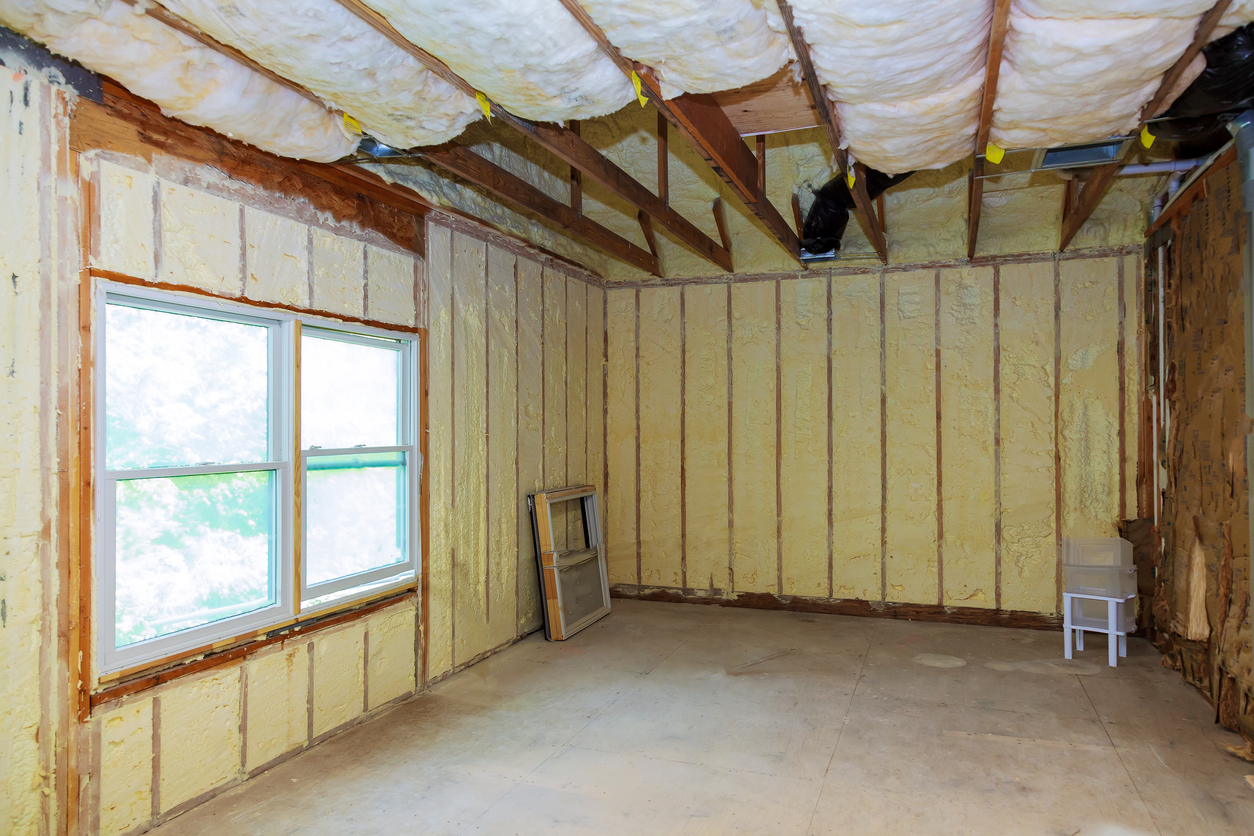

We may earn revenue from the products available on this page and participate in affiliate programs. Learn More ›
Q: My neighbors just had spray foam insulation applied in their attic. When my neighbor told me how much it cost, I was shocked that it was so much more expensive than regular insulation. Really, is spray foam insulation worth it?
A: Spray foam insulation is growing in popularity for many reasons: its watertight qualities, ability to fill spaces and voids quickly, and excellent insulating properties. However, it is one of the costliest options on the market. It’s also derived from petroleum and uses hydrofluorocarbon blowing agents, two compounds known for damaging the environment. There are several factors to take into account when considering spray foam insulation installation and how to hire a reputable insulation contractor. Before searching for “spray foam insulation near me,” homeowners will want to consider the following elements to determine if spray foam insulation is worth it.
Spray foam insulation is a better insulator than traditional insulation.
One of the most significant advantages of spray foam insulation is that it is a better insulator than other types, meaning homeowners can save money on their heating and cooling bills. Closed-cell foam insulation is a powerful insulator with an R-value (thermal resistance) of 6 to 7 per inch of thickness. For comparison, the R-value of fiberglass batt insulation is 3.1 to 3.4 per inch of thickness. Open-cell foam insulation is not as strong an insulator as its closed-cell counterpart at nearly half the R-value, but it is a cheaper alternative to closed-cell insulation since it expands more.

Open- and closed-cell spray foam effectively deaden sound—but so does mineral wool.
Adding insulation foam is a potential solution for homeowners who are looking at adding insulation to reduce noise from the outside or minimize the amount of noise transferring between floors. While there’s much debate over which type of insulation is the most effective sound-reducing material, fiberglass, mineral wool (also known as Rockwool), and spray foam (particularly open-cell) are among the most recommended options.
The ability of materials to diminish sounds can be measured with an STC (sound transmission class) rating. Loud conversation can be heard but not understood at an STC rating of 35, loud conversation cannot be heard at an STC rating of 45, and hardly anything can be heard at an STC rating of 60 or higher. Open-cell foam insulation can achieve an STC rating of 40 to 50, and mineral wool batt insulation can achieve an STC rating of 50. Blown-in fiberglass insulation has a slightly lower rating of 36. Still, it’s a more convenient alternative to mineral wool insulation as it doesn’t require walls to be completely opened, and it’s more affordable than spray foam.
Closed-cell spray foam insulation is watertight, while other types can be damaged by moisture.
Unlike other forms of insulation that can be compromised by water, closed-cell spray insulation is watertight. This can be a significant advantage, especially for homeowners who live in areas subject to frequent storms. When batt or loose-fill insulation come in contact with water, the fibers can clump and lose their effectiveness. It may be possible to dry out wet insulation with a dehumidifier, but insulation that’s become too wet may need to be removed and replaced.
Spray foam insulation is significantly more expensive than cellulose or fiberglass, and it’s better for a professional to install it.
While spray foam insulation has its advantages, it comes at a steeper price tag. Spray foam insulation installation costs an average of $2,360. This is more than twice the average cost of mineral wool insulation, which runs $1,000, and four to eight times the average price of fiberglass insulation installation, which comes in between $300 and $600.
The insulation materials themselves are more expensive than other types, but spray foam insulation also requires careful application. While there are some DIY spray foam kits, they’re unlikely to be economical for larger projects. Extra safety precautions are also necessary to mitigate the foam compounds’ potentially harmful effects, which include shortness of breath and eye irritation. For these reasons, it’s generally recommended to hire a professional insulation contractor.
The blowing agents in spray foam insulation have high global warming potentials (GWPs).
Besides the cost of attic or home insulation, one of the major downsides to spray foam insulation is its deleterious environmental effects. Specifically, the blowing agent that creates the tiny holes in the foam and gives it insulating power has a high GWP (global warming potential). According to the EPA, GWP measures how much energy 1 ton of gas emissions will absorb over a specific period (usually 100 years) in relation to 1 ton of carbon dioxide. The larger the number, the more the gas warms the earth.

On this scale, carbon dioxide has a GWP of 1. Methane, which is emitted from several artificial and natural sources, including animal agriculture, has a GWP of 27 to 30. This means methane is 27 to 30 times more potent at accelerating climate change than carbon dioxide when released into the atmosphere. Nitrous oxide, another byproduct of agricultural and industrial production, has a GWP of 273.
Hydrofluorocarbons (HFCs), which are common blowing agents, can have GWPs in the thousands or tens of thousands. The improved insulation that spray foam provides may compensate for the environmental damage; however, it can take at least a decade for the adverse effects to be balanced out by the home’s energy savings.
You can look for an installer that uses low-GWP or other environmentally friendly spray foam insulation.
Some spray foams use low-GWP blowing agents. One of these low-GWP options might be a better choice for homeowners who decide that spray foam insulation is the right choice for their home. When interviewing the best insulation contractors and getting quotes, homeowners can ask if the contractors are familiar with low-GWP blowing agents and if they’d be willing to use them.
Another way to make a spray foam insulation project less of a burden on the environment is to ask the insulation contractor if they can use a soybean-based product. Traditional spray foam insulation is made from petroleum, a nonrenewable resource, and its combustion is a significant contributor to greenhouse gas emissions. On the other hand, soybeans are a renewable resource and are not as harmful to harvest and process. Some soybean-based spray foams also use water as a blowing agent, which has a negligible GWP rating.

Insulation made from recycled materials is even better for the environment.
Homeowners who cannot find a low-GWP spray foam option or decide that another form of insulation better suits their needs may want to consider a recycled option. There is a medley of options available, and these are mainly made from recycled textiles like denim, cotton, and polyester. Cellulose insulation is another environmentally friendly option as it’s made from about 80 percent recycled paper materials. The costs of these insulation materials will also be more wallet-friendly than spray foam.
It’s a good idea to hire a professional insulation contractor.
No matter what type of insulation a homeowner opts for, hiring a professional insulation installer is always a wise idea. While a homeowner may not want to spend the extra money hiring a professional when they could DIY the project, insulation installers have years of experience to know which areas of the home require insulation, which don’t, and how much insulation is needed—which can ultimately save the homeowner money on the project and on their energy bills down the line. Especially for tricky materials like spray foam insulation, hiring a professional can ensure that the installation is done properly.
Sources: attainableHome, HomeAdvisor, Rise, Environmental Protection Agency
